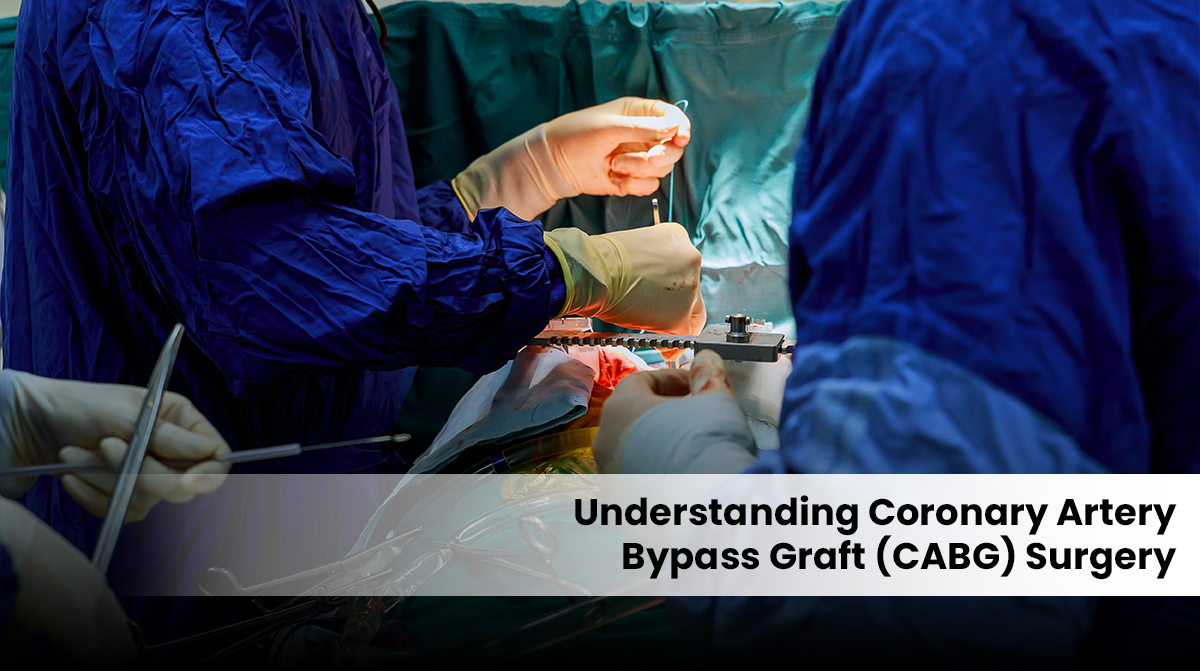
Coronary artery bypass graft surgery, or CABG, is one of the biggest medical advancements for the treatment of heart disease. It is a lifesaving intervention that enhances the efficient supply of blood to the heart in the event that coronary arteries become plugged or narrowed due to the formation of atherosclerosis. In this process, physicians create new pathways through the obstructed arteries using means of blood vessels that have not been diagnosed. They accomplish this by employing healthy vessels that are harvested from other parts of the patient’s body, a process that provides the heart with an alternative means to circulate oxygenated blood, which is vital.
The technique has evolved by a quantum leap over the course of some decades and has become a routine therapy in patients with advanced coronary artery disease. Cardiologists globally await the application of coronary artery bypass graft surgery as one of the optimal methods to improve the quality of life and survival in patients with advanced heart disease.
. When is CABG Surgery Suggested?
CABG bypass surgery is typically advised most frequently in patients with extremely severe clogs involving numerous coronary arteries, particularly when clogs are patterned in a manner that cannot readily be managed by less invasive interventions such as angioplasty or by placement of a stent. Whether the patient undergoes coronary artery bypass graft surgery or not is determined by several factors, i.e., how many and where the block occurs, the patient’s overall condition, and how well he or she can tolerate drugs.
These patients who are treated with medicine and also have chest pain, or those who have obstructions in the primary left coronary artery, or diabetic patients where more than one vessel is clogged, become candidates for this procedure. And also individuals whose angioplasty procedures are unsuccessful or whose heart muscles are weak, also due to previous heart attacks, can actually benefit from cabg bypass surgery.
. Types of CABG Procedures
There are several methods of performing coronary artery bypass graft surgery, and they all involve the requirements of the patient and their medical conditions. The most common is the routine open-heart surgery, where the breastbone is cut to have direct access to the heart. This may have a more unobstructed view and better access to all areas of the heart that require treatment.
Minimally invasive coronary artery bypass grafting is a relatively recent procedure involving smaller incisions and specialised technology. The method can potentially simplify the recovery process and minimise scarring, although not everyone is suitable due to the nature of their medical conditions.
Other CABG bypasses are performed with the heart still beating without the use of a heart-lung machine. The off-pump technique, as it is known, enables the removal of some of the risks of some of the layers of the standard procedures, particularly in the elderly or for those with certain conditions.
. Surgery Process
The surgery of the bypass graft of the coronary arteries typically takes anywhere from three to six hours, depending on the number of bypasses the patient needs and the complexity of the surgery. The patients undergo general anaesthesia before the surgery so that they feel no pain during the surgery.
The Surgeons will remove healthy vessels from the rest of the body, typically the chest wall, the leg, or the arm. They are the ones that will be utilised as grafts to circumvent the constricted coronary arteries. The internal mammary artery of the chest wall is utilised more frequently due to its better long-term quality and the ability to depend on it in the case of future occlusion.
. What to Expect and the Recovery Process
Recovery from CABG bypass surgery is typically begun by admitting patients into the intensive care unit, where they receive monitoring from the attending medical staff for 24 to 48 hours. The patients will, on average, spend five to seven days in the hospital, although this varies with the rate of healing per patient and potential complications.
The recuperation phase starts with pain management, antibacterial care, and graduated physical exercise. Patients are generally advised to begin with light activities such as sitting up and short testing, building strength and endurance with a healthcare provider’s consultation.
Recovery following coronary artery bypass graft surgery takes about six to eight weeks, and patients can be provided with close monitoring by their physicians within these weeks to heal in the appropriate manner. Cardiac rehabilitation centres have a tremendously significant role in enabling patients to regain their energy, begin to adopt heart-friendly routines, and believe in the healing process.
. Advantages and Long-term Results
The benefits of CABG cardiac bypass surgery far exceed the temporary relief from symptoms. Most patients comment that chest pain is much improved, energy levels are greater, and they are able to perform more activities each day. The surgery itself can have wonderful impacts upon quality of life, and those who undergo it can return to work, recreation, and quality time with family and friends.
In the long run, it can invariably be demonstrated that coronary artery bypass graft operation can extend life expectancy, most significantly in the very diseased multiple-vessel patient or the patient with obstruction of the left main coronary artery. A great majority of the patients see a dramatic improvement in exercise tolerance, no longer becoming short of breath or forced to translate chest pain when they exert themselves.
. Availability of Advanced Care
The cabg bypass surgery in Gurgaon is now easily within the affordability range of patients with certain cardiac requirements, ultra-high-tech medical facilities, and experienced cardiac experts. The area transformed into a hub of enhanced cardiac care by leveraging the benefits of the next-generation surgery technique, with supporting service facilities for the patient.
New heart centres emphasise individualised treatment plans for patients, and each patient is treated according to their unique situation and requirements. Individualised care is perhaps the most critical aspect of attaining successful outcomes and patient satisfaction.
Conclusion
Coronary artery bypass graft surgery is an experimental application of medical technology that has transformed the lives of millions of people across the world. While earnest consideration and earnest consultation with doctors should precede CABG bypass surgery, the procedure brings promise and healing to people with advanced coronary artery disease. As technology continues to advance in surgery as well as post-operative care, patients can expect improved outcomes and improved quality of life after this life-changing procedure.


